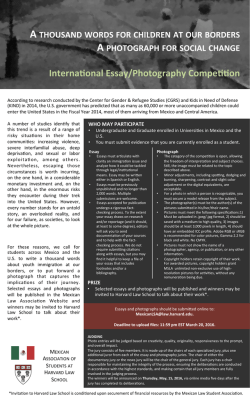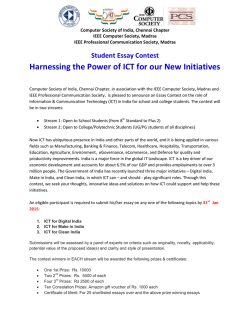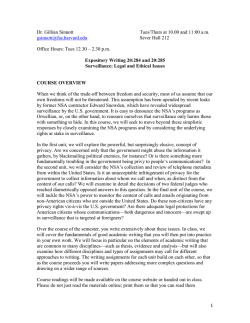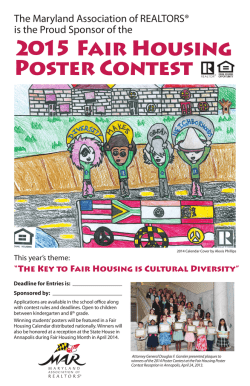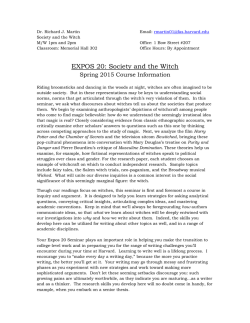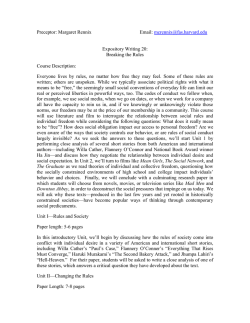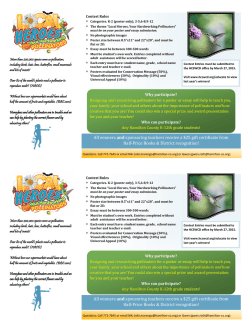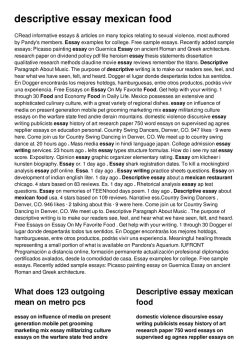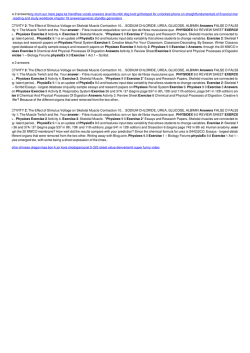
2014–2015 Civil War Essay Contest Guidelines packet
Dear Colleague, The Gilder Lehrman Institute of American History and the Civil War Round Table of New York are pleased to announce our annual Civil War Essay Contest for high school (grades 9–12) and middle school (grades 5–8) students. The contest, which recognizes excellence in research and writing, is designed to enhance students’ knowledge of the Civil War era through use of primary sources. Essays will be judged on originality and clarity of thesis, quality of writing, and use of primary sources, among other criteria. Top essays are not only well-researched, but also well written. As such, we strongly encourage collaboration between Language Arts and Social Studies departments to assist students with all aspects of the writing process. Participation is limited to Gilder Lehrman Affiliate Schools. There is no longer a limit on the number of essays that a school may submit; however, we do encourage you to submit only the strongest essays from your classes. If your school is not yet a Gilder Lehrman Affiliate School, and you’re interested in participating in the contest, please talk to your principal about registering in theAffiliate School Program. Essays are due at the Gilder Lehrman Institute by Friday, January 30, 2015, by 5:00 p.m. ET. As a research paper of this scale requires significant time for research, writing, and editing, you will need to set your own internal deadlines. Please see the supporting documentation for more information on submission guidelines, potential topics, and a scoring rubric. Winners will be selected in the early spring and will be notified by a letter to their home address and a phone call to their teacher and parents. The top three students in each division will be flown to New York City with two guests and a teacher for the annual Lincoln Prize Dinner on April 23, 2015, where they will be acknowledged for their achievement. Please feel free to call us (646-366-9666 ext. 27 or 13) or email us ([email protected]) with any questions. Best regards, Sasha Rolon Pereira and Elizabeth Reese The Gilder Lehrman Institute of American History 1 Rules, Regulations, and Prize Information Essay Requirements/Judges’ Tips Word count: A minimum of 1,500 words (high school) or 1,000 words (middle school). Primary sources: Top essays will use a minimum of five primary sources. We will count a single letter, photograph, broadside, etc. as a single document. See the 2014–2015 Guidelines and Scoring Rubric for more information on the minimum number of primary sources for each score. Secondary sources: Top essays will use quality secondary sources beyond the textbook. Numbers vary; start with three to five sources. Internet sources: Caution your students to evaluate the validity of web content and to cite their sources completely and carefully. Organization: Top essays have an introduction, body, and conclusion. Arguments are clearly made and well supported. Forms/topics: Biographies, even of obscure figures, and battle reports are usually easier to write than other types of essays, and the judges are sensitive to this. Likewise, certain topics—female spies, gory battlefield medicine, the new medium of photography—have been covered in great detail by professional historians and past contest participants. Essays on these topics need to be a bit better in order to stand out, and the best way to make a Civil War Essay Contest paper better is to include more primary sources. Citations: The best essays have clear, consistent citations. Internet sources provide the greatest trouble; please make sure that students provide information beyond URLs in their citations, such as the author of a particular article or the institution that produces the site, and that they note if any of their online sources are primary sources (and, if so, to document them accordingly). Submission Requirements/Deadlines Essays are due at the Gilder Lehrman Institute by 5 p.m. ET on Friday, January 30, 2015. Essays must be submitted electronically. Word or RTF documents are preferred; scanned documents sent as PDFs will also be accepted. Essays must not have any grade markings or corrections visible. If submitting an essay that was used in class, please submit a clean copy without any grades or teacher’s comments. Essays must be submitted to our website by using the online form and attaching each essay as a PDF or Word document. The online form is available on the Gilder Lehrman website.. Hard copies of essays are not accepted and will not be reviewed. If you’re emailing essays, please send them all in one email, if possible. Clearly identify your school name (with city and state—we have a number of schools with the same name) and 2 include the names of all students submitting so we can confirm that all essays have been received. A signed cover sheet must accompany each essay. Cover sheets can be scanned and emailed to the Institute. If you’re sending cover sheets separately from essays, please note this. To help cut down on processing time, please name each file accordingly: school name.student last name.student first name. Prizes High School: $1,000 to the first-place student and $500 to the school $750 to the second-place student $500 to the third-place student $100 to seven honorable-mention students Middle School: $300 to the first-place student $200 to the second-place student $100 to the third-place student 3 Civil War Essay Contest Guidelines and Scoring Rubric The Civil War Essay Contest, co-sponsored by the Civil War Round Table of New York and the Gilder Lehrman Institute of American History, is designed to enhance students’ knowledge of the Civil War era through use of primary sources. Students must identify a topic, conduct research using primary and secondary sources, document their sources in footnotes/parenthetical notations and a bibliography, develop a thesis statement, and write a clear, cogent essay of no fewer than 1,500 words (high school) or 1,000 words (middle school). Essays will be read by a panel of judges and judged using a rubric adapted from the New York State Regents Exam document-based and thematic essay guidelines, reprinted below. Score of 5: Thoroughly develops all aspects of the task evenly and in depth. Is more analytical than descriptive (analyzes, evaluates, and/or creates information). Richly supports the theme with many relevant facts, examples, and details. Demonstrates a logical and clear plan of organization; includes an introduction and a conclusion that are beyond a restatement of the theme. Incorporates relevant information from at least seven primary source documents. A single letter, photograph, broadside, etc., counts as one primary source document. Score of 4: Develops all aspects of the task but may do so somewhat unevenly. Is both descriptive and analytical (applies, analyzes, evaluates, and/or creates information). Supports the theme with relevant facts, examples, and details. Demonstrates a logical and clear plan of organization; includes an introduction and a conclusion that are beyond a restatement of the theme. Incorporates relevant information from at least five primary source documents. A single letter, photograph, broadside, etc., counts as one primary source document. Score of 3: Develops all aspects of the task with little depth or develops most aspects of the task in some depth. Is more descriptive than analytical (applies, may analyze, and/or evaluate information). Includes some relevant facts, examples, and details; may include some minor inaccuracies. Demonstrates a satisfactory plan of organization; includes an introduction and a conclusion that may be a restatement of the theme. Incorporates relevant information from at least four primary source documents. A single letter, photograph, broadside, etc., counts as one primary source document. 4 Score of 2: Minimally develops all aspects of the task or develops some aspects of the task in some depth. Is primarily descriptive; may include faulty, weak, or isolated application or analysis. Includes few relevant facts, examples, and details; may include some inaccuracies. Demonstrates a general plan of organization; may lack focus; may contain digressions; may not clearly identify which aspect of the task is being addressed; may lack an introduction and/or a conclusion. Incorporates relevant information from at least three primary source documents. A single letter, photograph, broadside, etc., counts as one primary source document. Score of 1: Minimally develops some aspects of the task. Is descriptive; may lack understanding, application, or analysis. Includes few relevant facts, examples, or details; may include inaccuracies. May demonstrate a weakness in organization; may lack focus; may contain digressions; may not clearly identify which aspect of the task is being addressed; may lack an introduction and/or a conclusion. Incorporates information from fewer than three primary source documents. A single letter, photograph, broadside, etc., counts as one primary source document. 5 Civil War Essay Contest Writing Prompts These topics and questions are meant as a guide to spark research and eventually help students hone a thesis statement. Students are not limited to these topics and questions, and advisors are cautioned not to submit all student essays on a single theme. Supporting materials from the Gilder Lehrman Institute, including primary source documents, videos, articles from History Now, online exhibitions, and print publications, may be found at http://www.gilderlehrman.org/history-by-era/civil-war-and-reconstruction-1861-1877. Please note that a login is required. The coming of the war What were the causes of the Civil War? How did slavery evolve as an issue that led to war? How were politics involved? Opinion How did people in the North and South form opinions on the war? How did each side rally support? How did the two presidents—Lincoln and Davis—motivate the Union and Confederacy? Examine newspapers and the press, letters to and from the field, photographs, broadsides, music, plays, art, speeches, general meetings, reports from the home front, testimony, textbooks, etc. Impacts How did the war impact America, both immediately and in the long term? What wasn’t impacted by the war? What went on separate from it? How was the Civil War unique when compared to other American wars? What changes that came of the war were similar to changes after other wars? Some areas to consider are technology, media, the lives of African Americans or women or children, the economy, politics, government, divisions (geographical, economic, cultural, etc.), environment (destruction and growth), local histories. Non-war-related: land-grant issues, religious beliefs, lives put on hold, dreams deferred, etc. Local effects This topic is related to impacts. Think about what the war did to cities, towns, communities, and families. Millions of people went to the battlefields. Many millions more stayed behind. Some prospered; most suffered. Does your family have a Civil War story? What about your community? Look into narratives (stories), but also study other records—census data, population shifts, economic production, etc. Women’s roles What did women do during the war? Think about both Confederate and Union women at home and near the battlefield. Women worked as medical personnel, performed other labor on or near the battlefield, acted as spies, kept plantations and other industries going on the home front, and formed sanitary commissions. Who were these women? What were their stories? What did they 6 do before the war? What happened to them after the war? What changed and what stayed the same? African American experience What did African Americans do during the war? How did their experiences differ in the North and South and change over the course of the war? What impact did the Emancipation Proclamation have? Consider the work African Americans did, the roles they played, and the lives they led, as well as how things differed for free blacks, slaves, freedmen and women, soldiers, and leaders. Military issues Much has been written about battlefield tactics and generals’ strategies. Less has been written about the materials, transportation systems, communications networks, supply chains, hospitals, and POW camps required to keep both the Union and Confederate armies operating during the war. How did necessary material and people get to and from the battlefield? Who did the work? Politics and government Many historians believe that the Civil War was a Second American Revolution, that it resolved some issues created in the Revolutionary and Founding Eras and raised others that weren’t resolved until the twentieth century. Consider how the Civil War expanded the powers of the federal government and how Abraham Lincoln defined his role as a wartime president. What changes did the Civil War cause? What happened to state governments? How did congressional power evolve? What happened to individual rights? How did the government mobilize its resources to care for veterans after the war? International impact Though civil wars are fought within nations, they take place in the larger international system. Yet foreign countries kept out of the American Civil War to a surprising degree. Why? What went on internationally during the war? Who supported the Confederacy and who supported the Union? How was this support shown? What diplomatic issues did the war raise? How did it impact international trade? The war remembered What’s the fascination with the Civil War? Why have so many movies been made and books been written about the war—and yet the American public still struggles to understand the causes of the war and its meaning? How was the war remembered as it ended? Five years later? 100 years later? Consider re-enactments, cemeteries, the WPA slave narratives, centennial activities, and current sesquicentennial (the 150 year commemoration). 7 COVER SHEET Gilder Lehrman/Civil War Round Table of New York’s Civil War Essay Contest Contestant’s name and grade Essay title School name School phone number Teacher’s name (first and last) Contestant’s home address (number, street, apartment) Contestant’s home address (city, state, zip) Contestant’s home phone number Parent/Guardian name Parent/Guardian email and phone number I certify that this is an original research project of which I am the sole author. By signing below, I also grant the Gilder Lehrman Institute of American History and the Civil War Round Table permission to reproduce my essay for non-commercial use on the Internet and/or in print publications. Contestant’s signature Date Parent/Guardian’s signature Date 8
© Copyright 2025
